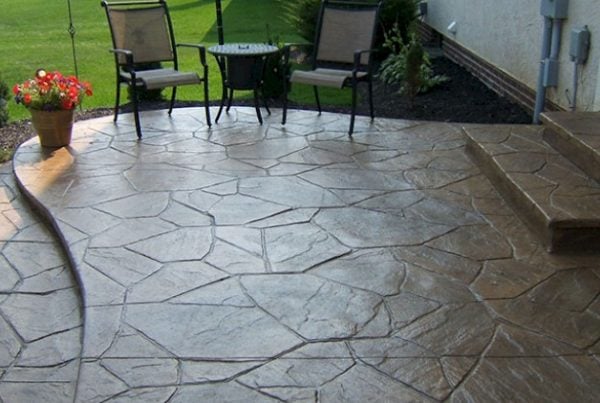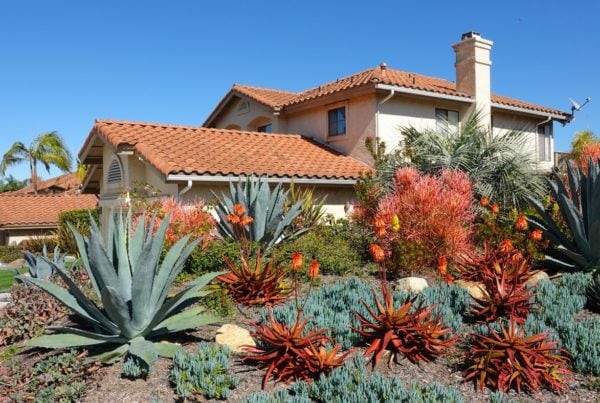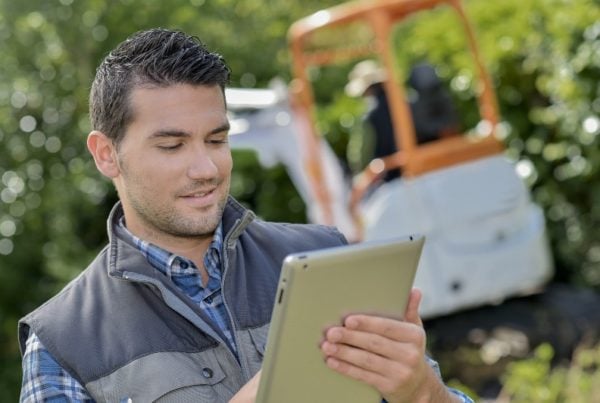Table of Contents
- Understanding Your Home’s Style and Architecture
- Assessing Your Lifestyle
- Budgeting for Your Landscape Design
- The Importance of Research
- Getting Professional Help
- Choosing Climate-Friendly Plants
- Considering Sunlight and Shade
- Size Matters: Choosing Plants for Your Yard Size
- Maintenance Requirements
- Frequently Asked Questions
Understanding Your Home’s Style and Architecture
The first step in choosing the right landscape design for your home is appreciating your home’s architectural style. This isn’t just about the visual connection but also about enhancing the inherent character of your home.
For instance, with its intricate detailing and traditional charm, a Victorian-style home might be better complemented by a formal and symmetrical landscape design. You could incorporate timeless elements like rose gardens, hedges, and ornamental trees.
On the other hand, a modern minimalist home, with its clean lines and open spaces, might benefit from an asymmetrical, organic layout. A landscape design that embraces simplicity and features architectural plants, native grasses, and a monochromatic color scheme would work well.
A landscape should continue your home, creating a seamless transition between the indoor and outdoor spaces.
Assessing Your Lifestyle
Your lifestyle plays a vital role in shaping your outdoor spaces. You want your landscape to be a functional extension of your living area, catering to your needs.
If you have young children, safety is paramount. You’ll want to create a space where they can play and explore without the risk of injury. This might mean avoiding plants with thorns or poisonous berries and opting for a soft, well-maintained lawn and outdoor play equipment.
For those who love entertaining, your outdoor space can extend your living room. Consider incorporating a patio or deck with comfortable seating, an outdoor kitchen or barbecue area, and ambient lighting to set the mood.
Budgeting for Your Landscape Design
Like any home improvement project, landscaping requires financial planning. It’s crucial to set a budget and stick to it.
You’ll need to consider plant costs, hardscaping materials (like paving or retaining walls), outdoor furniture, and possibly hiring professionals for design help or labor.
Remember, landscaping is often a long-term investment that can significantly boost the value of your property. Be sure to weigh the cost against the potential return.
The Importance of Research
Before diving into a landscaping project, take the time to research. This includes understanding different design styles, learning about various plants and their care requirements, and familiarizing yourself with local regulations regarding water use or restrictions on certain plant species.
You can find inspiration from online resources, gardening books, and magazines. Taking a local garden tour or visiting a botanical garden can also give you real-life examples of what works in your area.
Getting Professional Help
While DIY landscape design can be rewarding, it can also be complex. If you’re unsure where to begin or how to handle certain aspects, consider hiring a professional.
A landscape designer like RMPS Landscaping can provide expert guidance. They can help you create a design that fits your needs, budget, and local climate and offer solutions to challenges you may not have anticipated. They can also provide a detailed plan and oversee the project’s execution to ensure it aligns with your vision.
Choosing Climate-Friendly Plants
One of the keys to a successful, low-maintenance landscape is to choose plants suited to your local climate conditions. Native plants, or those naturally occurring in your region, are often the best choice as they’ve adapted to local weather patterns, soil types, and wildlife.
For example, in a region like Castle Rock, Colorado, where the climate is semi-arid, you might consider drought-tolerant plants such as Rocky Mountain Columbine or Blue Grama Grass. These plants have adapted to the local climate and can handle the dry conditions. In addition, ornamental grasses can add texture and movement to your landscape, while native flowering plants can provide color and attract local wildlife.
Don’t forget to consider the microclimates within your yard as well. Areas near buildings or fences might have different conditions than open spaces, affecting which plants will thrive there.
Considering Sunlight and Shade
Just as climate plays a significant role in plant selection, so does the sunlight your yard receives. Different plants have different sunlight needs, and placing a plant in an unsuitable location can lead to poor growth or even death.
Consider sun-loving plants like lavender, rosemary, or petunias if your yard enjoys full sun. If buildings or trees shade your yard, shade-loving plants such as hostas, ferns, or hydrangeas might be a better choice.
Remember to assess the sunlight in your yard throughout the day and across different seasons, as the sun’s position can change significantly.
Size Matters: Choosing Plants for Your Yard Size
The size of your yard should also influence your plant selection. Large trees or sprawling plants might overwhelm a small yard, making the space feel cramped or overshadowed. Conversely, tiny plants may seem lost or insignificant in a large yard.
Consider plants that grow vertically for a small yard, like climbing vines or tall, slender trees. You can also use design tricks like diagonal lines or mirror images to make your yard appear larger.
In a large yard, you can create different zones or garden rooms. Large trees can provide shade and structure, while expansive lawns or beds of perennial flowers can fill the space with color and texture.
Maintenance Requirements
It’s important to consider the maintenance requirements of the plants you choose. Some plants, like roses or fruit trees, require regular pruning, feeding, and disease control. Others, like native grasses or succulents, may only need minimal care.
Consider your willingness and ability to maintain your landscape. If you enjoy gardening, you might not mind high-maintenance plants. But if you prefer a more hands-off approach, choose plants that require less attention.
Remember, a well-maintained landscape looks better and is healthier and more likely to thrive.
Frequently Asked Questions
1. What is the best landscape design for a small yard?
The best landscape design for a small yard typically maximizes the use of space. Vertical gardening, the use of mirrors, and diagonal patterns can make a small yard appear larger. Choosing the right-sized plants is also crucial; avoid plants that might overwhelm the space.
2. How can I landscape my yard on a budget?
Landscaping on a budget involves careful planning. You can phase the project over time, doing a bit each season. Choose plants that are native to your area, as they are often more affordable and require less maintenance. Reusing or repurposing materials can also help to reduce costs.
3. What plants are best for a sunny yard?
Sun-loving plants are best for a sunny yard. These include lavender, rosemary, and petunias. However, always consider your local climate and soil conditions when choosing plants.
4. What plants are best for a shady yard?
Shade-loving plants like hostas, ferns, or hydrangeas are great for shady yards. However, the type of shade (dappled light, deep shade, etc.) can also influence which plants will thrive.
5. How often should I maintain my landscape?
The frequency of landscape maintenance depends on the type of plants and your local climate. Some plants might need weekly watering, while others only need attention every few months. A well-maintained landscape is healthier and more likely to thrive.
6. Can I design my landscape without professional help?
Yes, you can design your landscape without professional help. However, it requires careful planning and research. Professionals can provide expert advice and may save you from potential costly mistakes.
7. How does RMPS Landscaping help in designing landscapes?
RMPS Landscaping provides expert guidance throughout the landscape design process. They can help you create a plan that meets your needs, budget, and local climate conditions. They can also oversee the project to ensure it aligns with your vision.
8. How do I choose plants for my local climate?
Choosing plants for your local climate involves understanding which plants are native to your area and the specific conditions of your yard (sunlight, soil type, etc.). Local nurseries, garden centers, or extension services can often provide valuable advice.
9. What are the benefits of a well-designed landscape?
A well-designed landscape enhances the beauty of your home, can increase property value, and creates a space for relaxation, entertainment, or play. It also contributes to local biodiversity and can improve environmental conditions.
10. What are the common mistakes to avoid in landscape design?
Common mistakes in landscape design include neglecting to consider the mature size of plants, not planning for all seasons, overlooking maintenance requirements, and not considering the home’s architectural style. Proper planning and research can help avoid these pitfalls.
Servicing the greater Douglas County area, RMPS Landscaping is your partner in achieving the perfect landscape for your home. Whether you’re located in Castle Rock, Larkspur, Castle Pines, Greenwood Village, Highlands Ranch, Elizabeth, Parker, or beyond, our team of experts is ready to bring your outdoor vision to life. For a friendly, free, and no-obligation quote, don’t hesitate to contact us. We’re eager to help you create an outdoor space that complements your home and enhances your lifestyle.





